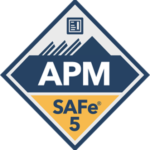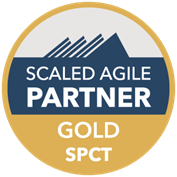Master Agile Practices Via Comprehensive SAFe Certification
In an increasingly complicated service landscape, mastering Nimble methods with comprehensive SAFe accreditation has arised as an essential competency for professionals intending to improve organizational efficiency. As companies seek to navigate the difficulties of quick adjustment, the implementation of SAFe concepts uses a pathway to enhanced results.
Recognizing SAFe Structure
The SAFe (Scaled Agile Framework) framework works as an organized approach for implementing Dexterous techniques at scale throughout big companies. It gives a comprehensive method that aligns the various degrees of an organization, from group to profile, making sure that all parts work cohesively towards common objectives. SAFe incorporates concepts from Agile, Lean, and item development circulation, using a well-defined collection of duties, functions, and methods.
At its core, the SAFe framework makes up four levels: Group, Program, Huge Solution, and Portfolio. Each level addresses particular elements of Nimble distribution, from handling small teams of developers to supervising several programs and straightening critical campaigns with business objectives.
SAFe motivates partnership among cross-functional teams, cultivating an environment where continual improvement and technology are vital. SAFe DevOps certification. By stressing alignment, transparency, and integrated top quality, the framework equips organizations to react quickly to market adjustments while providing value to consumers
Moreover, SAFe sustains numerous approaches, such as Scrum and Kanban, enabling organizations to tailor their technique according to details job needs. This versatility makes SAFe a durable structure for organizations aiming to thrive in a swiftly advancing company landscape.

Advantages of SAFe Accreditation
Frequently demanded in the Agile community, SAFe certification provides numerous benefits for specialists and organizations alike. Among the main benefits is the enhancement of skills and expertise in executing the Scaled Agile Framework (SAFe), which gears up individuals with the tools necessary to drive effective Agile transformations. This qualification signifies a commitment to expert growth, making prospects more affordable in the work market.
For organizations, having licensed specialists fosters a culture of continuous improvement and partnership, crucial for adapting to changing market demands. It makes it possible for teams to align their work with tactical objectives, eventually improving performance and performance. Firms with a higher percentage of SAFe-certified employees usually experience reduced time-to-market and enhanced quality of deliverables.
Furthermore, SAFe accreditation helps with networking opportunities with various other Agile experts, making it possible for the exchange of best methods and experiences (SAFe For Architects). This joint network can considerably add to business and personal development. In recap, acquiring SAFe certification not just enhances specific capabilities however likewise reinforces the overall Agile maturation of an organization, leading to lasting success in today's vibrant service environment
Key Elements of SAFe
Structure on the benefits of SAFe certification, recognizing the crucial parts of the Scaled Agile Framework is important for successfully implementing its principles. The SAFe structure makes up 4 main levels: Group, Program, Huge Remedy, and Profile. Each level addresses different aspects of agile practices, assisting in positioning and shipment throughout the organization.
At the Team level, cross-functional groups work collaboratively making use of Nimble techniques, such as Scrum or Kanban, to deliver incremental value (SAFe Lean Portfolio Management). The Program degree focuses on the Agile Release Train (ART), which is a long-lived team of Agile teams that intends, commits, and implements her comment is here together. The reference Large Option degree addresses intricate remedies that call for numerous ARTs to function in performance, making sure control and integration

Planning For SAFe Certification
Planning for SAFe qualification needs a tactical approach to guarantee a thorough understanding of the framework. Familiarize yourself with the core principles and worths of the Scaled Agile Framework (SAFe) Evaluation resources supplied on the Scaled Agile internet site, consisting of the SAFe structure documents, study, and whitepapers, to build a solid structure.

Additionally, exercise with example exam questions to acquaint on your own with the format and sorts of concerns you might encounter. Signing up with research groups or discussion forums can promote understanding exchange and provide assistance from fellow prospects.
Using SAFe in Organizations
Carrying Out the Scaled Agile Framework (SAFe) within organizations demands a structured method that aligns groups and procedures towards an usual goal. The successful application of SAFe begins with Clicking Here establishing a clear understanding of its principles, including placement, openness, and cooperation. Organizations needs to first examine their existing processes and recognize areas for improvement, guaranteeing they await the cultural change that SAFe requires.
Following, management dedication is necessary. Leadership must proactively support the change by advertising a society of continual discovering and versatility. Training and certification for groups aid gear up participants with the needed abilities and expertise to run successfully within the SAFe structure. This consists of establishing Agile Launch Trains (ARTs), which function as the backbone for supplying worth throughout the company.
Regular planning sessions, such as Program Increment (PI) preparation, should be carried out to synchronize teams and focus on work. Additionally, leveraging metrics to determine development and performance is crucial for continuous improvement. By continually using SAFe concepts and practices, companies can accomplish higher dexterity, improve collaboration, and inevitably drive much better organization outcomes. Welcoming this structure placements organizations to react promptly to market adjustments and consumer requirements.
Conclusion
To conclude, grasping Agile techniques through extensive SAFe accreditation considerably adds and boosts professional capacities to business efficiency. The understanding obtained from recognizing the SAFe framework, in addition to its essential components, helps with successful changes and boosts collaboration amongst groups. Additionally, getting this certification settings individuals favorably in an affordable task market, emphasizing the relevance of continual improvement and alignment within companies. Embracing SAFe inevitably results in increased effectiveness and greater quality deliverables.
The SAFe (Scaled Agile Structure) framework serves as a structured technique for carrying out Dexterous methods at range throughout large companies. One of the main advantages is the enhancement of skills and understanding in applying the Scaled Agile Framework (SAFe), which gears up people with the tools necessary to drive effective Agile transformations. In summary, getting SAFe qualification not just boosts individual abilities however likewise enhances the overall Agile maturation of a company, leading to lasting success in today's vibrant organization environment.
Structure on the advantages of SAFe accreditation, recognizing the crucial components of the Scaled Agile Structure is important for efficiently applying its concepts.Implementing the Scaled Agile Framework (SAFe) within companies requires a structured strategy that straightens groups and procedures towards a common goal.